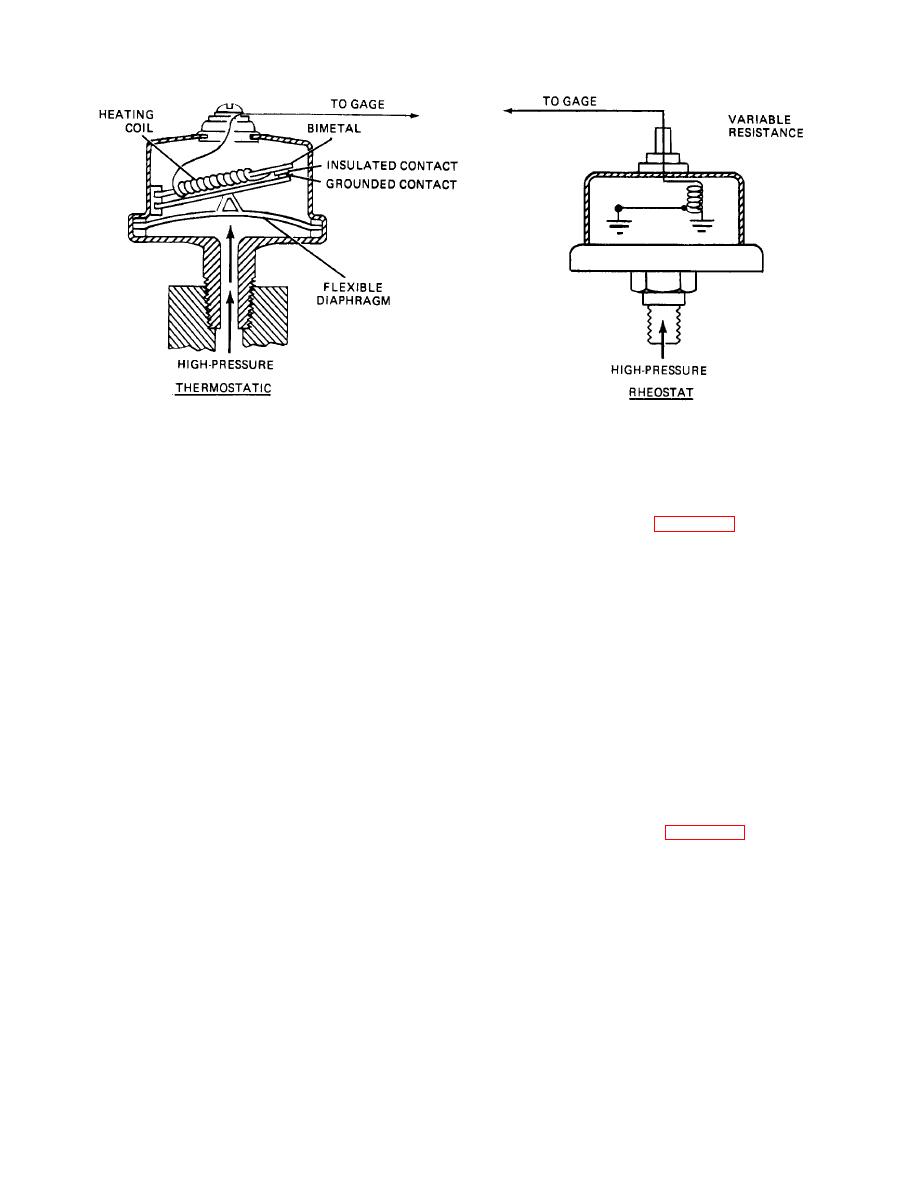
| Tweet |

Custom Search
|
|

|
||
 TM 9-8000
Figure 17-10. Types of Sending Units for Pressure Gages
unit that Is used with each gage type varies as follows:
tube, it will tend to straighten out. As it straightens, the
attached gage pointer will move, giving a reading
(1) The sending unit that Is used with the
d. Indicator Lamp (Fig. 17-12). The oil pressure
thermostatic gage utilizes a flexible diaphragm that
moves a grounded contact. The contact that mates with
warning light Is used In place of a gage on many
the grounded contact Is attached to a heated bimetallic
vehicles. The warning light, although not an accurate
strip. The flexing of the diaphragm, which Is done with
indicator, Is valuable because of Its high visibility in the
pressure changes, varies the point tension. The different
event of a low oil pressure condition. Because an engine
positions of the diaphragm produce gage readings In the
can fail or be damaged permanently in less than a
same manner as the different positions of the float arm
minute of operation without oil pressure, the warning light
of the tank sender In paragraph 17-3a.
often Is used as a backup for a gage to attract Instant
attention to a malfunction. The warning light receives
(2) The sending unit that Is used with the
battery power through the ignition switch. The circuit to
magnetic-type gage also translates pressure Into the
ground is completed through the engine sender switch.
flexing of a diaphragm. In the case of the magnetic gage
The sender switch consists of a pressure-sensitive
sending unit however, the diaphragm operates a
diaphragm that operates a set of contact points. The
rheostat. The flexing of the diaphragm In the pressure
contact points are calibrated to turn on the warning light
sender produces the same results as does the
whenever the engine oil pressure drops below
movement of the float arm In the tank sender described
approximately 15 psi (103.4 kPa), depending on the
In paragraph 17-3d. This type of sender also can be
equipment.
used with a thermostatic-type gage If a voltage-limiting
de- vice like the one used In paragraph 17-3b also Is
17-5. Temperature Gages(Fig. 17-13).
used.
a. Usage. The temperature gage Is a very Important
c. Mechanical Gages (Flg. 17-11). The mechanical
indicator In automotive equipment. The most common
pressure gage uses a thin tube to carry an actual
use Is to Indicate engine, transmission, and differential
pressure sample directly to the gage. The gage basically
oil temperatures and engine coolant temperatures.
consists of a hollow, flexible C-shaped tube called a
Depending on the type of equipment, the gage may be
bourden tube. As fluid or air pressure Is applied to the
electric
or
mechanical.
TA233627
bourden
17-8
|
||
 |
||